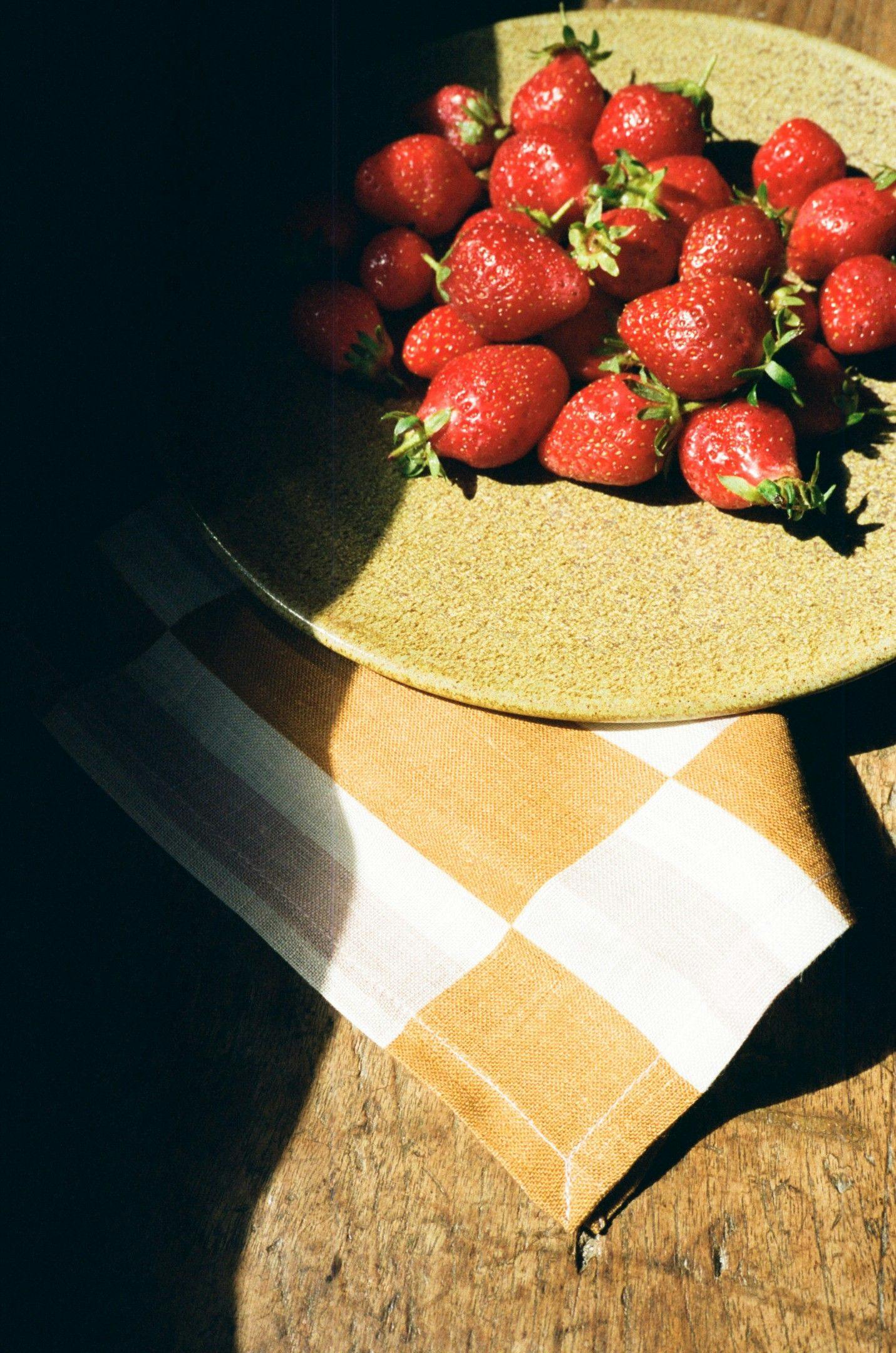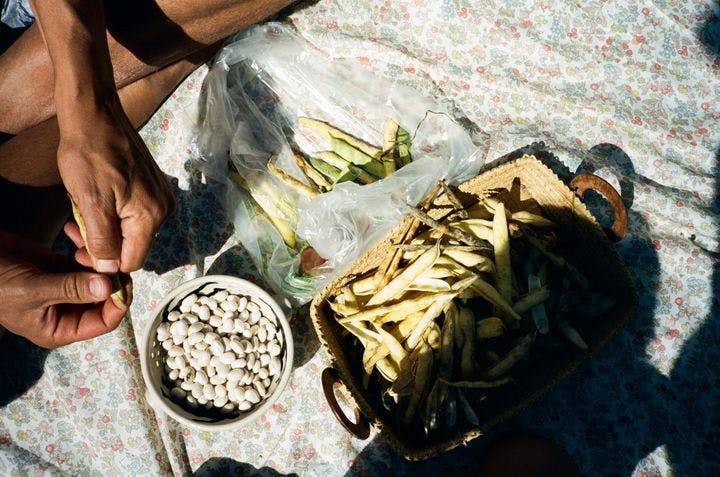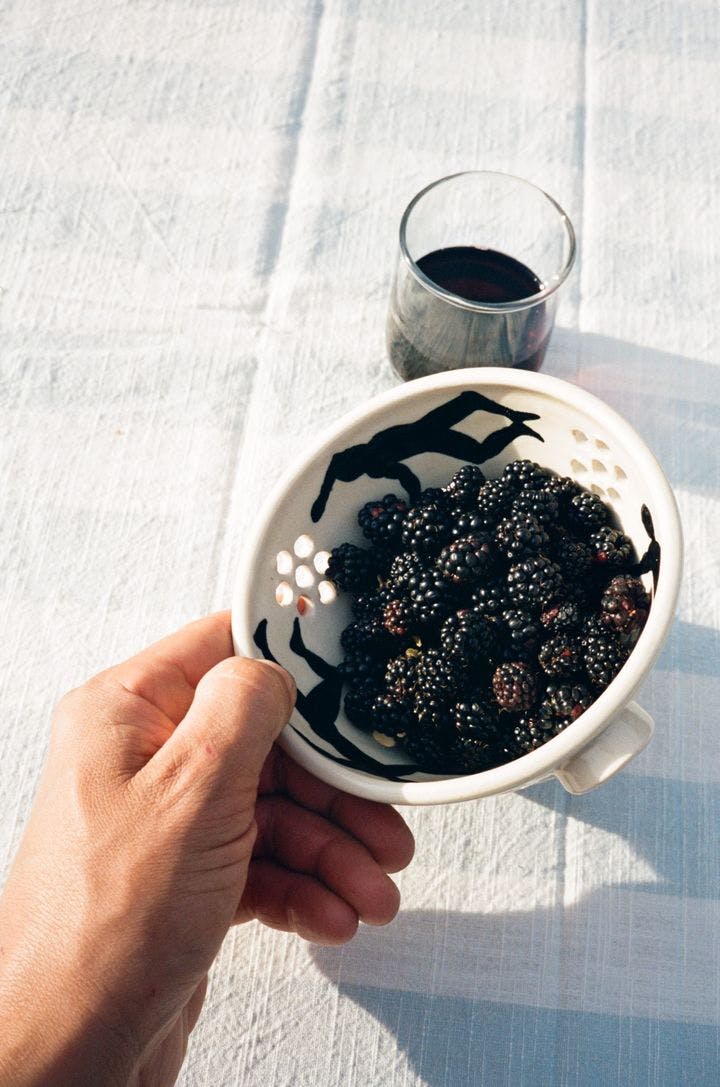
What To Plant, Grow & Eat This Summer
With over 7.8 million posts under the #GrowYourOwn hashtag on Instagram and millions more on TikTok too, the enthusiasm that comes from growing, preparing and eating the produce of a garden allotment or windowsill herb garden is contagious in its appeal.
As the summer season eases into play and the opportunities for hosting grow with each sunny evening, questions around al fresco table settings, seasonal menus and warm weather approved cocktails become necessary food for thought. If you’re seeking beginner friendly ways to increase the amount of homegrown fruit, vegetables, herbs and edible flowers to serve as part of both intimate dinner plans for two, and joyful family BBQs this summer, consider this TikTok informed guide all you need to know, irrespective of your at-home growing space.
1. Starting small: the benefits of balcony gardening
The rise in popularity of urban gardening has seen advice around growing in small spaces skyrocket, with books such as How to Grow Your Dinner: Without Leaving the House by Claire Ratinon offering step-by-step guidance to growing a range of edible plants in window box and balcony settings.
And there are benefits to doing so too! Growing vegetables in pots allows for an adaptability that is less available when growing outdoors, with pots and containers allowing for plants to be moved and adjusted into areas with more or less sunlight, and importantly can be placed out of reach of snails and slugs. If you have limited access to traditional garden pots, know that anything from old shoes, grow bags and colanders can provide the perfect home for miniature vegetable gardens in the most limited of spaces.
2. Aim higher
Gardening and cooking creator Elis of @theelisproject suggests vertical growing solutions including ladder planters and hanging baskets to expand growing possibilities on smaller balconies and patios, as well as packing in vegetables tightly and harvesting frequently. “Gardening books and seed packets often have spacing advice, but when growing on a patio I’d suggest challenging this advice and packing in as many vegetables as you can. It honestly doesn’t do them any harm, especially if you’re harvesting more frequently.”
3. Herb heaven
To elevate your summertime menu further with additional homegrown flourishes, a herb garden is another patio, balcony and windowsill friendly means to elevate delicious summer dishes. Often described as one of the easiest herbs to care for, dill is a summertime favourite, offering the perfect fresh and citrus-like flavour to add to fish dishes including salmon or haddock, or on salads involving cucumber or halloumi. Laura LeBoutillieron of @gardenanswer on TikTok emphasises that you simply need “bright light and lots of water” and dill is near enough a foolproof herb for anyone starting out in growing their own produce.
Mint is another summer kitchen essential, whether in cool, sweet jugs of Pimms or on cucumber and feta salads, this herb is another beginner friendly addition for any keen new gardeners. It is coincidentally also one of the easiest herbs to propagate and continue growing all summer long, with @joesgarden sharing the simplest of techniques to propagate your supermarket bought mint, allowing it to thrive all summer. Simply take a cutting, remove the lower leaves, place the stem into water and within 5 days the cutting will have grown new roots and be ready to repot again.

4. Planning ahead
Fruit and vegetables best harvested during the summer months include tomatoes, courgettes, spring onions, kale, lettuce, cabbage, strawberries, blueberries, apricots, cherries and plums, creating a rainbow worthy selection of fresh produce to expand your dinner options all season long. These delicious garden offerings will be ready to enjoy at different times throughout the summer, with resources from The Royal Horticultural Society offering failsafe guides on the optimum times to sow, prune and harvest each month.
To reap the benefits of a plentiful garden next summer, jot down these dates in preparation for harvests to come:
Plant in January:
Broad beans
Geraniums
Sweet peas
Leeks and root vegetables
Plant in February:
Tomato and cucumber seed for greenhouse growing
Garlic and shallots
Broad beans
Carrots
Parsnips
Beetroot
Lettuces
Cosmos
Lilies
Plant in March:
Asparagus crowns
Sweet peppers, tomatoes, cucumbers, aubergines, celery, salads and globe artichokes can be sown indoors.
Raspberries
Blueberries
Chives
Plant in April:
Pot-grown fruit trees and bushes
Marrow
Courgette
Aubergine
Chilli
Dill
Parsley
Plant in May:
Alpine strawberries
Cucumber
Pumpkin
Sweet corn
Rocket
Oregona
Rosemary
Plant in June:
Continue sowing salad crops, such as beetroot, lettuce, pak choi and radish.
Celeriac
Celery
Basil
Broccoli
Plant in July:
Leeks
Cabbage
Turnips
Fennel
Plant in August:
In the south of England you can still sow quick maturing salad crops such as summer lettuce, radish, rocket, sorrel, chicory and fennel.
Continue to sow spring cabbage, turnips and oriental veg.
Plant in September:
Spinach
Turnips
Winter lettuce
Plant in October:
All pot-grown fruit
Spring cabbages
Garlic cloves
Plant in November:
New fruit trees and bushes
Plant in December:
Garlic
Shallots
5. If you grow one thing…
If the prospect of managing multiple flower beds, herbs and vegetables feels like an overwhelming task, know that strawberries are one of the easiest and most rewarding plants and can even be grown from a supermarket bought punnet of fruit. Simply slice off the skin of a strawberry, leave to dry on a paper towel before scraping off the seeds and sprinkling onto a pot of compost. Lightly cover with more soil, and within a couple of weeks you will begin to see signs of baby strawberries sprouting. Once mature enough, repot directly into garden soil or individually into pots, and enjoy fresh, delicious homegrown strawberries perfect for summertime desserts such as Eton Mess or sliced and frozen into cocktail-worthy ice cubes.

6. Heatwave habits
Whilst seemingly endless hot summer days can feel like the recipe for a perfect season of time spent outdoors, it doesn’t necessarily offer a thriving environment for plants exposed to direct sunlight for lengthy periods of time. Kerry from @thatgardengeek suggests avoiding overhead watering and instead giving plants a long soaking directly at the roots during the morning or evenings when the sun is at its weakest.
Next up, mulch. Defined as any loose substance that can be laid over the top of existing soil, mulch helps to control weeds, retain moisture and most importantly regulate temperature which can save plants from extreme conditions when long stretches of hot weather strike. Finally, Kerry advises against pruning or transplanting your plants during periods of hot weather, noting that plants get stressed when it comes to big changes in their environment. Save these kinds of tasks for cooler days to allow both yourself and your plants an easier experience.
7. A recipe for garden success
If your garden has struggled through particularly hot days, keep aside old banana skins for an easy, DIY and zero-waste plant food. Kate of @my_plastic_free_home advises simply adding banana skins to a jar and topping with water, before leaving overnight to create a natural banana tea fertiliser which can be used to directly water plants both in gardens or pots. Alternatively, blend your banana skins (the process of which makes the nutrients more readily available) with a small amount of water to create a nutrient rich banana smoothie. Pour onto the soil around your plants and use a trowel to work in for healthier, happier plants guaranteed!
8. Become your own florist
When dressing a table during the warmer months, flowers no doubt make for a central component of any setting, and being able to harvest them from your own garden space can feel all the more rewarding. Dahlias, Sweet Peas, Cosmos and Sunflowers are amongst some of the easiest flowers to grow both in soil amongst vegetables, perennials and shrubs, or in containers and planters.
To get the most out of your cut-flower garden, flower farm @bloomhouse__ recommends ‘pinching’ flowers that fall into the ‘cut and come again’ category (think Zinnias, Cosmos, Marigolds, Dahlias and Asters) when first planted. This allows energy to deposit back into the plant and encourage new growth by directing the plants growing power away from already established stems. This is perfect for those with limited space who want to encourage more growth from a smaller quantity of flowers.

9. … And eat your flowers too
If you choose wisely, the flowers you sow can not only create beautiful table centrepieces whilst displayed in water, but also within the food you choose to serve. Edible flowers used within baking, salads and warm weather cocktails offer a simple way to elevate paired back dishes and inject both colour and novelty to your food and drinks offerings. Top pick of Roisin Beck-Taylor, flower farmer florist and creator at @verdeflowerco is Calendula, offering a subtle peppery flavour to soups and salads when grown both in a garden setting or potted indoors. Nasturtium is similarly easy to grow for those new to caring for flowers, and offers a delicious flavour similar to that of radishes. Finally, purple basil, which Roisin comments is perfect for adding zinginess to summer dishes and a beautiful injection of colour.
From floral cheese taking centre stage in summer charcuterie boards, to asparagus and blue cheese potato salad, the possibilities for beautiful and delicious dinner party dishes made all the more inviting with the peppery flavour of edible flowers are endless.
10. Harvest like a pro
Taking notes from the wisdom of Chelsea at @ourlittlehome2017, investing in a good quality pair of garden scissors is the first step to ensuring you can easily and precisely harvest homegrown flowers, cutting diagonally on each stem to allow water to travel more easily into each. Depending on when you plan to cut your flowers ahead of hosting, aim to do so when each bud is still partially closed. This will allow your bouquet to look fresher for longer and reach its peak when fully immersed in water. Finally, make sure to cut away the foliage and leaves on the lower parts of each stem, as this is prone to rotting when submerged in water concludes Chelsea.
11. Mindful moments
And finally, whilst summer can bring endless opportunities to socialise following a long winter, it doesn’t necessarily offer feelings of ease and joy for all. For those seeking moments of peace in solitude and quieter summer moments, gardening can provide a welcome slice of escapism in allowing you to become absorbed in something truly mindful whilst also spending healing time outdoors.
“When we think of meditation we think of being still, closing our eyes and crossing our legs” shares Christopher Griffin of @plantkween on TikTok, “but meditation can be whatever helps you feel truly present in your body, and for me that’s gardening”.
Friend of Glassette Claire Ratinon shares her rituals for achieving and honouring mindful gardening experiences, allowing for a practice that feels both rewarding and relaxing:
“Before I get stuck into my list of gardening tasks for the day, I like to take a slow walk around my growing space with a cup of tea and see what’s changed since I last had a peep. Making time to observe is part of the magic of growing plants and it gives you an opportunity to really notice what nature is getting up to and how best to involve yourself as a gardener.”
Whether you have an expansive at-home allotment or a few adored balcony planters, gardening during the summer months can offer a breadth of calming benefits amongst the busyness of modern living that span far beyond nurturing this element of your home life.
Read our interview with Claire Ratinon for more tips.
Inspired to start growing your own? Buy your seeds now on Glassette.